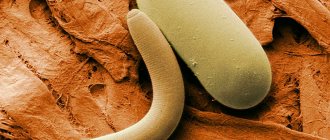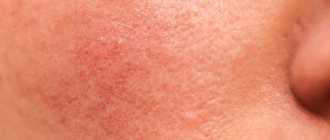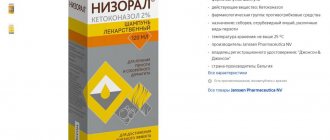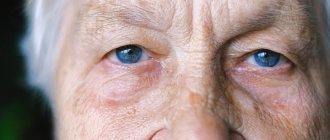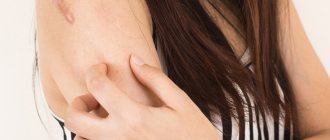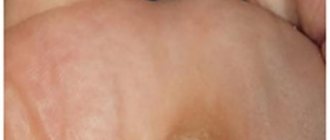The Center for Maxillofacial Surgery and Implantology has created excellent conditions for effective diagnosis and removal of any benign tumors on the face.
Our highly qualified surgeons specialize in operations of any complexity, have extensive experience and master the most modern techniques for removing tumors, such as lipoma.
Varieties of wen
In medicine, a wen is called a lipoma. This benign formation, which consists of fat cells, affects the surface of the skin. Externally, lipomas are dense tubercles of a yellowish or white hue. Single specimens do not cause concern to humans (except for the aesthetic side). If there are a lot of them on the face, they can cause pain.
Wen can form on the neck, around the eyes, on the chin, near the lips, on the nose, on the ear.
There are many types of lipomas. However, the main ones, most often found on the face, are xanthelasma and milia (millet).
Xanthelasmas are soft, yellowish formations. Their basis is sebum. They can have different sizes and arbitrary shapes. Mostly they pop out on the eyelids. They are mainly concerned about women over 50 years of age. Capable of growing, connecting with neighboring formations.
Milia are small white nodules that protrude above the epidermis. They are formed from horny particles and subcutaneous fat. Can be observed in both adults and infants. In most cases, the skin on the cheeks, chin, and wings of the nose is affected. There are both single and multiple rashes.
They do not cause discomfort and are classified as a cosmetic defect.
Stages of the appearance of comedones
- Sebum accumulates in the hair follicle and gets stuck in the duct due to, among other things, a dense keratinized layer of cells (hyperkeratosis).
- The release of toxins from the deep layers of the dermis becomes more difficult.
- Sebum thickens and becomes filled with toxins and bacteria.
- The duct expands under the pressure of harmful substances accumulated in it.
- Further stages of development differ depending on whether an open or closed comedon appears:
- Or a dark plug when sebum oxidizes and melatonin (pigment) appears.
- Or the papule remains under the skin, causes internal inflammation and eventually breaks out (closed comedon).
Causes of lipomas
The true causes of rashes are not fully understood. They are formed in males and females of different ages.
However, there is an assumption that wen is formed due to the impact on fat metabolism of factors such as:
- High levels of cholesterol in the blood or lipid metabolism problems. Excess cholesterol makes subcutaneous fat more viscous, which leads to blockage of the sebaceous ducts and accumulation of fat in the epidermis.
- Genetic predisposition. In the human body, from birth, uncharacteristic fat cells are formed, which contribute to the further appearance of lipomas. Transmission of the corresponding gene occurs according to the autosomal dominant type.
- Disruptions in the endocrine system. Hormonal imbalances contribute to the accumulation of subcutaneous fat in different parts of the body.
- Kidney and liver diseases. These organs are responsible for hematopoiesis, removal of toxins and excess water. Failures in their activity can lead to the formation of lipomas.
- Aggressive exposure to ultraviolet rays for a long time.
- Menopause, diabetes, gastrointestinal diseases.
- Neglect of personal hygiene rules.
- Bad habits (drinking alcohol, fatty and sweet foods).
People with combination and oily skin types are at risk.
In 50% of cases, a sharp increase in lipomas on the face signals a weakened immune system and the presence of chronic illnesses. Improper facial care, in addition to lipomas, can provoke the formation of acne. This factor accounts for 25% of cases.
Chemical peeling
As mentioned above, light peelings can be carried out at home, however, more intense and, of course, effective chemical peels can only be carried out within the walls of a cosmetology clinic under the strict supervision of a cosmetologist to avoid skin burns. Chemical peeling exfoliates dead skin cells, tightens pores, and has an antiseptic and brightening effect.
Let's look at the most popular types of chemical peels.
Milk peeling is suitable for very sensitive skin. It can be done at any time of the year. Lactic acid is found in pickles and lactic acid fermentation products. In addition to it, the composition includes urea and a complex of amino acids. This peeling gently exfoliates and at the same time moisturizes the skin, and also stimulates the growth of new cells,
Almond can be on a gel or water-alcohol basis, and can also contain not only the main component (mandelic acid), but also other types of acids. Used to improve skin quality, regulate sebum production, reduce the appearance of wrinkles and age spots.
Azelaine peeling normalizes keratinization in the follicle ducts and sebum production, has an exfoliating, antibacterial and anti-inflammatory effect. It contains nonandioic, 1.7-heptanedicarboxylic acid, which is found in wheat, barley, lilac and other plants.
Glycolic and salicylic peels (AHA and BHA) are often performed simultaneously. In tandem, they have the maximum therapeutic effect: they not only cause the death of old cells, cause their desquamation, but also stimulate the production of natural collagen, as well as skin regeneration. They also discolor pigment spots and post-acne, improve metabolic processes.
Diagnosis and treatment of lipomas
To find out the cause of the formation of wen, it is recommended to consult a specialist.
The therapist collects the necessary information, after which, together with the dermatologist and surgeon, a visual examination of the patient is carried out.
Next, the formations are palpated, and if necessary (suspicion of a malignant nature), a histological examination is prescribed, which involves taking tissue for a biopsy.
Additionally, specialists may recommend ultrasound, MRI, CT, etc. It is important to distinguish lipomas from conditions such as lymphadenitis, hygroma, atheroma, etc. Only after this the doctor determines the tactics for further action.
Treatment methods for lipomas are varied:
- Medication. It involves the use of creams and ointments that help soften the tissues of the epidermis, as well as improve blood circulation. The advantage of this option is that when using local drugs, the likelihood of side effects is minimal. However, it is worth keeping in mind that the result will only be for small-sized wen (no more than 3 cm).
- Surgical intervention. Microsurgery can be performed using either local or general anesthesia. It depends on the location of lipomas. This technique is used in the case of tumors whose size exceeds 3 cm. It is important that after the operation, relapse in this area is excluded.
- Laser. Before the laser procedure, a tissue biopsy must be performed. The removal process is quick. After it there are almost no scars left. In addition, re-growth of wen is excluded.
- Electrocoagulation. Performed under local anesthesia. No regrowth is observed after this procedure.
- Puncture-aspiration method. This option is suitable for combating incompletely formed lipomas, when it is possible to suck out the fat with a needle without damaging the skin. It is painless, but has a significant drawback: there is a high probability of new lipomas forming in place of the removed ones. In addition, the devastated area of skin sags, which does not look very aesthetically pleasing.
- Chemical peeling. The ducts are deeply cleansed of sebaceous plugs. Relapses are excluded.
Medicinal ointments
In the early stages, when the wen on the face is still small, you can get rid of it at home, by using such remedies as decoctions, masks and compresses. It is possible to use alcohol tinctures, for example salicylic alcohol, as well as iodine (apply pointwise). But you need to remember that if the problem concerns the eyelid or eye, then these products are prohibited from being used.
It is also impossible to squeeze out lipomas in these places, as you may lose your vision. You can get rid of tumors in the facial area using various ointments.
Vishnevsky ointment
It contains castor oil (base), tar and xeroform. A small amount of ointment is squeezed onto a medium-sized piece of gauze and applied to the affected area for 12 hours.
The procedure is carried out for 3 days, rest for 2 days. The result is that the contents are pulled out. Moreover, this remedy helps not only in the initial stages, but also when the disease is already advanced.
Vitaon
This product contains:
- thyme;
- chamomile;
- mint;
- fennel;
- celandine;
- sagebrush.
This tandem of medicinal herbs is an excellent alternative to Vishnevsky ointment. The product has no contraindications. Effectively draws out the contents without leaving scars or marks on the skin.
Ichthyol ointment and Levomekol
They also have the property of drawing the contents of the capsule to the surface.
Badyaga
It can be used as an independent product or as part of various ointments and balms. Has a healing, anti-inflammatory effect. Due to its healing properties, it is used as a prophylaxis for a large number of diseases, as well as after surgical operations. This product is made from animal ingredients.
Has a warming effect. When used in the head area, you should be extremely careful, since one of the side effects is hyperthermia. In addition, experts advise using medications such as Happyderm, Levosin and Actovegin to treat wen.
How to make a cream based on pharmaceutical ointments
At home, you can make a cream based on ointments sold in pharmacies. To do this, you need to take Vishnevsky and Ichthyol ointment in equal quantities. Mix well and add a few drops of aloe juice. Apply several times a day until the lipoma comes out.
Prevention
You can reduce the risk of developing wen if you adhere to certain points:
- giving up bad habits;
- maintaining a healthy diet;
- regular hygiene;
- use of exclusively high-quality cosmetics;
- periodic examinations by a dermatologist.
If the precautions still prove to be insufficient and wen forms, you need to seek professional help from a specialist. You cannot pierce or squeeze out lipomas yourself, as this can lead to blood poisoning (due to infection), scars, etc. Only a doctor can determine the nature of the tumor and, if necessary, prescribe treatment.
How to avoid comedones
- maintain hygiene , including regularly changing face towels and bed linen;
- avoid touching your face with your hands;
- normalize nutrition (avoid sweet, fatty, floury, fried foods and fast food), maintain a drinking regime, take vitamins;
- maintain a sleep schedule and try to avoid overwork and stress;
- do not neglect physical activity - this helps speed up metabolic processes, saturate cells with oxygen and remove toxins;
- to refuse from bad habits;
- use medications and medicinal products prescribed by a cosmetologist;
- monitor hormonal levels and avoid any changes;
- avoid prolonged exposure to the open sun;
- Do not self-medicate and do not use unproven methods of traditional medicine.
How to properly care for skin with open and closed comedones
If the skin is prone to oiliness and the formation of closed and open comedones, it requires special care. Necessary:
- wash your face and use alcohol-free tonics and lotions containing acids;
- minimize the use of foundation and other cosmetic products that clog pores;
- do self-massage and tone the skin with contrasting washes and showers;
- use sunscreen cosmetics;
- monitor cell renewal, use home peelings and special brushes for washing, do not bring the skin to a critical condition;
- moisturize and nourish the skin from the outside to avoid drying and peeling. Restoring the water balance of the epidermis is extremely important for successful treatment;
- squeeze out pimples yourself
- regularly , undergo all prescribed procedures and follow recommendations.


